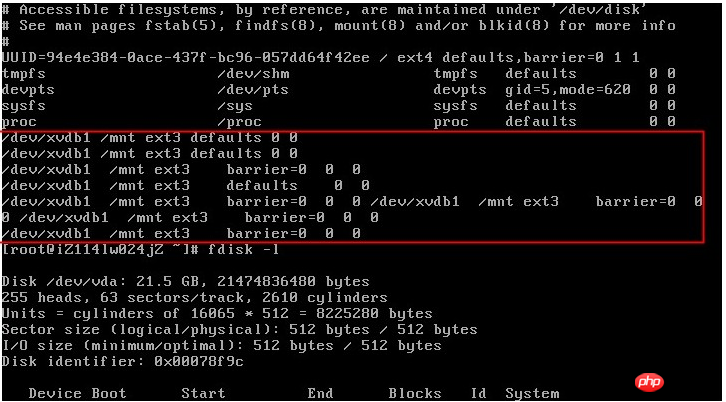Home >Operation and Maintenance >Linux Operation and Maintenance >Things to note when adding mounting information to ordinary cloud disks and SSD cloud disks
The content of this article is about the precautions when adding mounting information to ordinary cloud disks and SSD cloud disks. It has certain reference value. Friends in need can refer to it. I hope it will be helpful to you. .
Precautions when adding mounting information to ordinary cloud disks and SSD cloud disks
When adding a data disk in a Linux system, follow step 5 of Mounting a Data Disk in a Linux System to add partition information. , /dev/xvdb1 is the mount point of an ordinary cloud disk. If you are using an SSD cloud disk, the mount point is /dev/vdb1. If wrong information is added, the mount -a command will not be used, and the system will not be able to be mounted when the computer is turned on.
1. Use fdisk -l to check the specific data disk information.

#2. Check whether the information added in /etc/fstab matches. And be careful not to add mounting information repeatedly, as this will cause the system to fail to start due to repeated mounting at boot.

3. Use vim/vi editor to modify the /etc/fstab file.

#4. Comment or delete the incorrect information, add the corresponding mount information and then use mount -a to test it.
The above is the detailed content of Things to note when adding mounting information to ordinary cloud disks and SSD cloud disks. For more information, please follow other related articles on the PHP Chinese website!